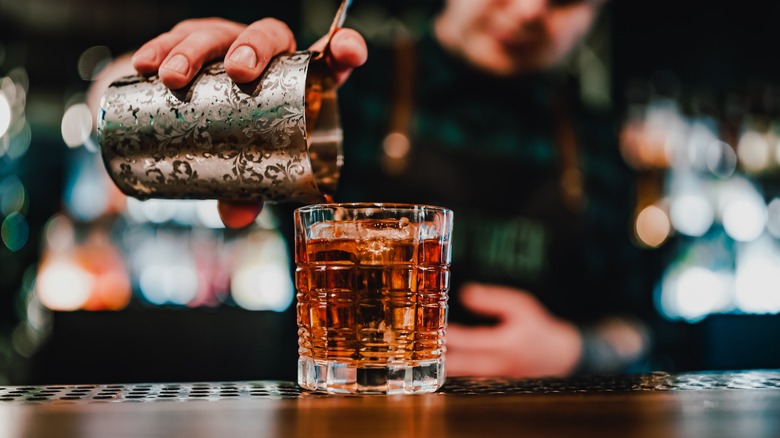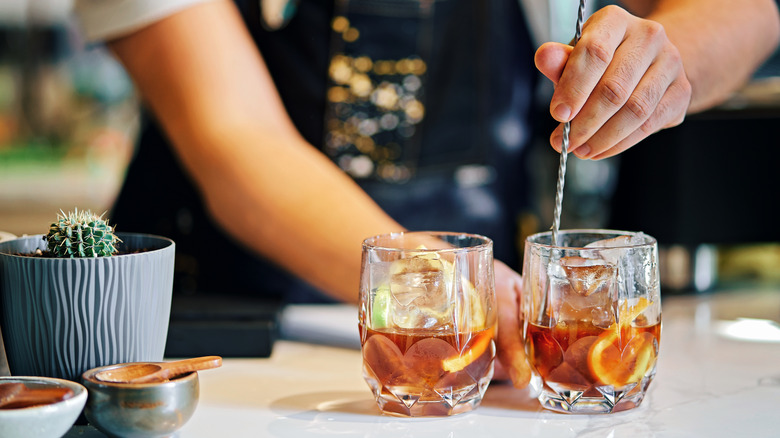What Is A Standard Drink And How Does It Compare To A Mixed One?
The words "standard drink" and "mixed drink" might sound similar, but knowing the difference between them is crucial to a fun and hangover-free night out. Sound difficult to differentiate? Don't fret. It's a bit like how a rectangle isn't a square, but a square is a rectangle — except less complicated.
According to the CDC, a standard drink in the U.S. is 14 grams (0.6 ounces) of pure ethanol alcohol. In execution, this can take different forms since different spirits have different strengths. 12 ounces of beer gets sippers the same amount of tipsy as 5 ounces of wine or 1.5 ounces of full-strength (40% ABV) liquor — and all of these count as one standard drink. Your go-to happy hour beer and a shot, for example, counts as two standard drinks.
Keep in mind that the definitive "standard drink" means different things in different countries. In the U.K., it's called a "unit of alcohol," and it's 8 grams. In Austria, it's 20 grams. As a global standard, the World Health Organization says 10 grams of alcohol constitute a median standard drink, and it's up to individual governments to set their own guidelines. Also, remember that not all beers are created equal: Sam Adams Boston Lager totes the standard 5% ABV, whereas Dogfish Head 120 Minute IPA boasts 15%-20%. Check the label on any bottle in your hand to be certain. Similarly, you'll want to know what's in your favorite cocktail before you can determine whether it counts as one standard drink — or more.
Know thyself, and know thy drink
Whereas "standard drink" refers to a specific amount of alcohol content, "mixed drink" is a term used to describe any mixed alcoholic beverage, regardless of its strength. For instance, a Manhattan cocktail counts as a mixed drink, combining bourbon, sweet vermouth, dry vermouth, and Angostura bitters. But at 27.74% ABV per serving, a single one of these cocktails is the equivalent of 1.7 standard drinks. Ordering three Manhattans over dinner is nearly the equivalent of crushing a six-pack.
Mixed drinks will always contain at least one standard drink. In other words, if you dump a Four Loko, a shot of Aftershock liqueur, and a slug of orange Fanta into an empty water bottle, that's a mixed drink — but it contains way more alcohol than one standard drink. Indeed, ultra-high ABV mixed drinks in this vein are often red flags for bartenders. If a customer already sounds tipsy as the words "Long Island Iced Tea" or "Vodka Red Bull" come out of their mouth, chances are, they're getting cut off for the night. On the flip side, if you make a Tom Collins at home with a 1.5-ounce shot of gin and some lemonade, then that mixed drink would contain just one standard drink.

